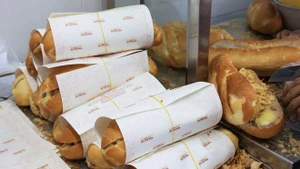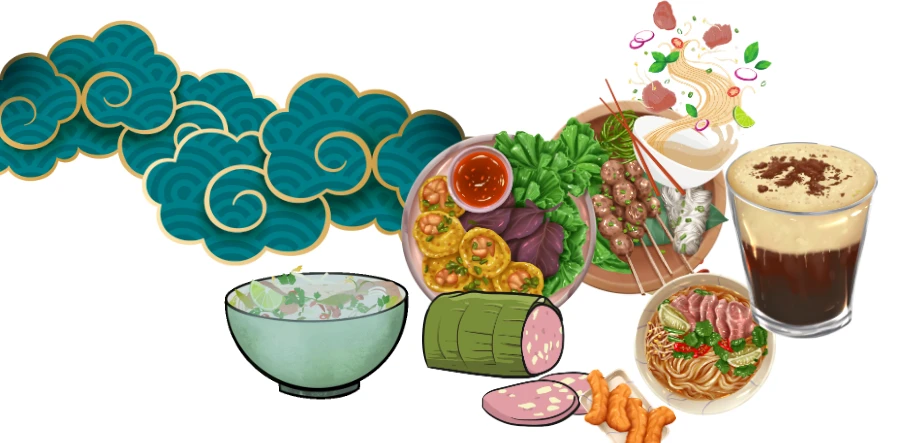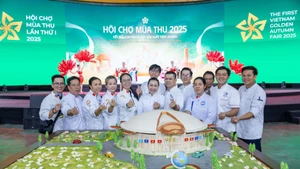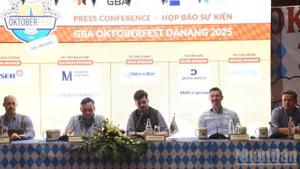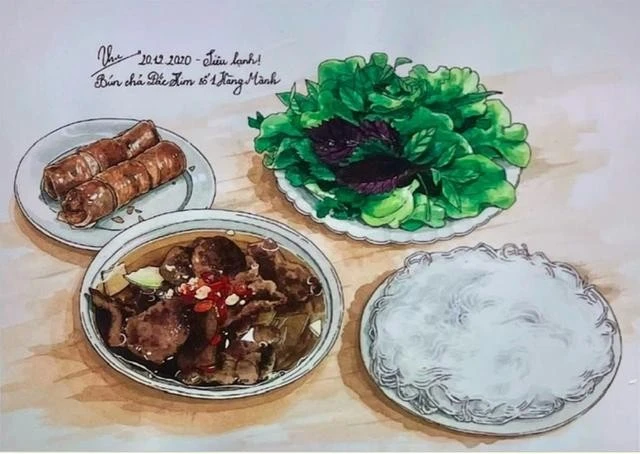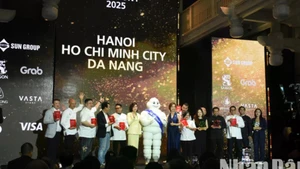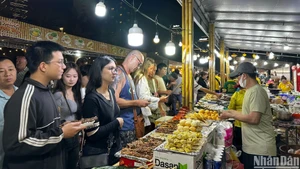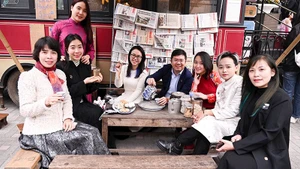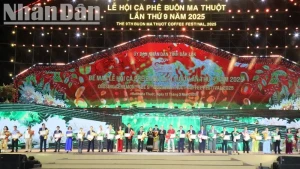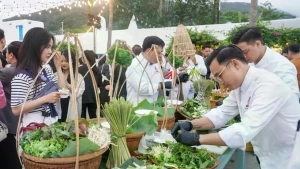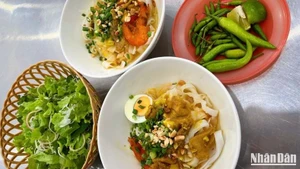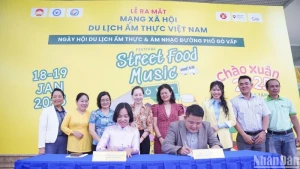The cake has a thin multi-layered crust made of flour, with a filling of durian, mung beans and taro, with or without salted duck egg. The outer part can be uncovered layer by layer. As the cake is cut, the aroma of the filling is appetising.
Traditionally, Pia cake was made only for the Full Moon Festival and Tet (Lunar New Year). As with other such food items, the cake is now made and sold all year round. It has a shelf life of up to two months, instead of a fortnight.
To make an attractive, tasty Pia cake, bakers have to exercise sophisticated skills at several stages.
To make the crust, they mix the flour with sugar and finely mill the mixture into very thin layers.
The filling of either durian, mung bean, taro and salted duck egg, or durian, steamed mung bean, taro and sugar, are ground into a fine paste and added with a bit of pork fat, before being used to cover the salted duck egg.
The baker then applies a layer of oil and egg yolk to the cake, before putting it in a traditionally-made earth oven for baking, at an average of about 270 degrees Celsius. After 7 – 10 minutes, it is turned over and applied with more layers of oil and egg yolk, and baked for another 10 – 15 minutes, until it turns golden brown.
The cake has a tender and soft crust on the outside and a juicy and flavourful cream inside.

